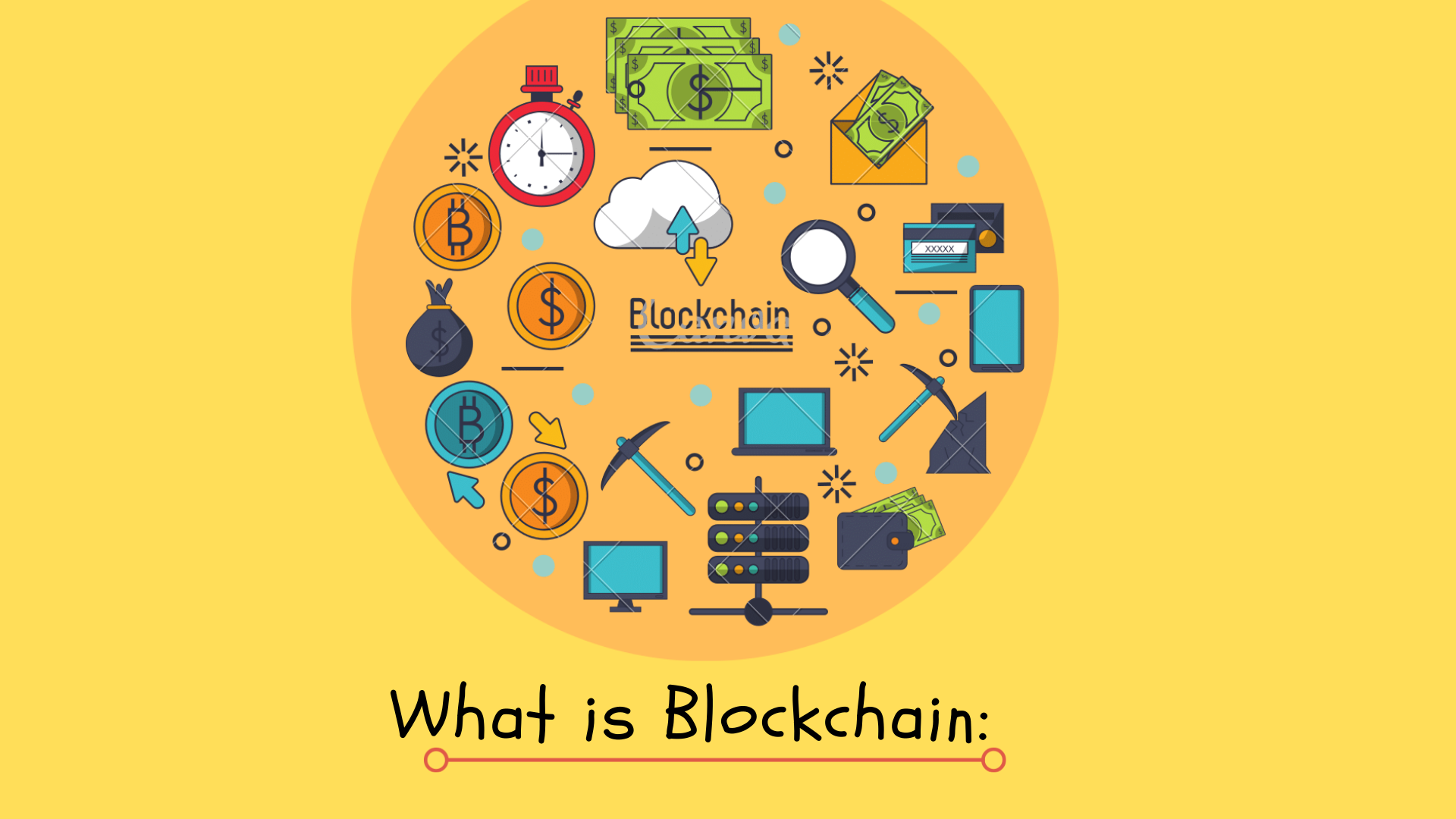Categories
Date/Time of Last Update: Fri Apr 19 00:06:31 2024 UTC
********** HEALTH **********
return to top
A modern pilgrimage’s transformative power | Letters
Thu, 18 Apr 2024 17:06:06 GMT
Norma Neill and Judith A Daniels respond to a Guardian leader on the long path to enlightenment
Re your editorial (The Guardian view on pilgrimage: a 21st-century spiritual exercise, 14 April), my sister has just completed her third pilgrimage to Santiago de Compostela in Spain.
On this trip she met a young man who was walking the 500 miles with his probation officer. He had had the choice of walking the Camino or going to prison; for what offence she did not discover, but over the six weeks of walking she reports that she saw a transformation in the fitness and general wellbeing of both men. It would seem that the men and the justice system in Spain benefited.
Norma Neill
Askernish, South Uist
Continue reading...
Match ID: 0 Score: 35.00 source: www.theguardian.com age: 0 days
qualifiers: 35.00 fitness
Team GB & ParalympicsGB release Paris 2024 kits
Thu, 18 Apr 2024 16:46:42 GMT
Team GB and ParalympicsGB release the kits their athletes will wear at the 2024 Olympic and Paralympic Games in Paris.
Match ID: 1 Score: 15.00 source: www.bbc.co.uk age: 0 days
qualifiers: 15.00 athlete
Something blue: British kits for Paris 2024 stripped back and traditional
Thu, 18 Apr 2024 13:31:07 GMT
Bland, blue, and designed to avoid any brouhaha – or hoo haa. That is the formula for the official British kit for this summer’s Paris Olympics and Paralympics, which was unveiled in Paris on Wednesday.
According to Adidas, the manufacturer of Team GB’s kit, the athletes will wear “a design DNA that celebrates the unique aspects of Great Britain, while encapsulating the fire of passion that burns within every athlete”.
Continue reading...
Match ID: 2 Score: 15.00 source: www.theguardian.com age: 0 days
qualifiers: 15.00 athlete
Who really wins if the Enhanced Games go ahead? – podcast
Thu, 18 Apr 2024 04:00:20 GMT
Billed as a rival to the Olympic Games, the Enhanced Games, set to take place in 2025, is a sporting event with a difference; athletes will be allowed to dope. Ian Sample talks to chief sports writer Barney Ronay about where the idea came from and how it’s being sold as an anti-establishment underdog, and to Dr Peter Angell about what these usually banned substances are, and what they could do to athletes’ bodies
Clips: Talk TV, News Nation, Inside with Brett Hawke, ESPN
Read Barney Ronay’s opinion piece on the Enhanced Games
Continue reading...
Match ID: 3 Score: 15.00 source: www.theguardian.com age: 0 days
qualifiers: 15.00 athlete
Top 10 Best PLR(Private Label Rights) Websites | Which One You Should Join in 2022?
Sat, 26 Feb 2022 13:36:00 +0000
Content creation is one of the biggest struggles for many marketers and business owners. It often requires both time and financial resources, especially if you plan to hire a writer.
Today, we have a fantastic opportunity to use other people's products by purchasing Private Label Rights.
To find a good PLR website, first, determine the type of products you want to acquire. One way to do this is to choose among membership sites or PLR product stores. Following are 10 great sites that offer products in both categories.
What are PLR websites?
Private Label Rights (PLR) products are digital products that can be in the form of an ebook, software, online course videos, value-packed articles, etc. You can use these products with some adjustments to sell as your own under your own brand and keep all the money and profit yourself without wasting your time on product creation.
The truth is that locating the best website for PLR materials can be a time-consuming and expensive exercise. That’s why we have researched, analyzed, and ranked the best 10 websites:1. PLR.me
PLR.me is of the best places to get PLR content in 2021-2022. It offers a content marketing system that comes with courses, brandable tools, and more. It is the most trusted PLR website, among other PLR sites. The PLR.me platform features smart digital caching PLR tools for health and wellness professionals. The PLR.me platform, which was built on advanced caching technology, has been well-received by big brands such as Toronto Sun and Entrepreneur. The best thing about this website is its content marketing automation tools.
Pricing
- Pay-as-you-go Plan – $22
- 100 Monthly Plan – $99/month
- 400 Annual Plan – $379/year
- 800 Annual Plan – $579/year
- 2500 Annual Plan – $990/year
Pros
- Access over 15,940+ ready-to-use PLR coaching resources.
- Content marketing and sliding tools are provided by the site.
- You can create courses, products, webinars, emails, and nearly anything else you can dream of.
- You can cancel your subscription anytime.
Cons
- Compared to other top PLR sites, this one is a bit more expensive.
2. InDigitalWorks
InDigitalWorks is a leading private label rights membership website established in 2008. As of now, it has more than 100,000 members from around the globe have joined the platform. The site offers thousands of ready-to-be-sold digital products for online businesses in every single niche possible. InDigitalWorks features hundreds of electronic books, software applications, templates, graphics, videos that you can sell right away.
Pricing:
- 3 Months Plan – $39
- 1 Year Plan – $69
- Lifetime Plan – $79
Pros
- IndigitalWorks promotes new authors by providing them with 200 free products for download.
- Largest and most reputable private label rights membership site.
- 20000+ digital products
- 137 training videos provided by experts to help beginners set up and grow their online presence for free.
- 10 GB of web hosting will be available on a reliable server.
Cons
- Fewer people are experiencing the frustration of not getting the help they need.
3. BuyQualityPLR
BuyQualityPLR’s website is a Top PLR of 2021-2022! It's a source for major Internet Marketing Products and Resources. Whether you’re an Affiliate Marketer, Product Creator, Course Seller, BuyQualityPLR can assist you in the right direction. You will find several eBooks and digital products related to the Health and Fitness niche, along with a series of Security-based products. If you search for digital products, Resell Rights Products, Private Label Rights Products, or Internet Marketing Products, BuyQualityPLR is among the best websites for your needs.
Pricing
- Free PLR articles packs, ebooks, and other digital products are available
- Price ranges from 3.99$ to 99.9$
Pros
- Everything on this site is written by professionals
- The quick download features available
- Doesn't provide membership.
- Offers thousand of PLR content in many niches
- Valuable courses available
Cons
- You can't buy all content because it doesn't provide membership
4. IDPLR
The IDPLR website has helped thousands of internet marketers since 2008. This website follows a membership approach and allows you to gain access to thousands of PLR products in different niches. The best thing about this site is the quality of the products, which is extremely impressive.
This is the best PLR website of 2021-2022, offering over 200k+ high-quality articles. It also gives you graphics, templates, ebooks, and audio.
Pricing
- 3 Months ACCESS: $39
- 1 YEAR ACCESS: $69
- LIFETIME ACCESS: $79
Pros
- You will have access to over 12,590 PLR products.
- You will get access to training tutorials and Courses in a Gold membership.
- 10 GB of web hosting will be available on a reliable server.
- You will receive 3D eCover Software
- It offers an unlimited download limit
- Most important, you will get a 30 day money-back guarantee
Cons:
- A few products are available for free membership.
5. PLRMines
PLRmines is a leading digital product library for private label rights products. The site provides useful information on products that you can use to grow your business, as well as licenses for reselling the content. You can either purchase a membership or get access through a free trial, and you can find unlimited high-quality resources via the site's paid or free membership. Overall, the site is an excellent resource for finding outstanding private label rights content.
Pricing
Pros
- 4000+ ebooks from top categories
- Members have access to more than 660 instructional videos covering all kinds of topics in a membership area.
- You will receive outstanding graphics that are ready to use.
- They also offer a variety of helpful resources and tools, such as PLR blogs, WordPress themes, and plugins
Cons
- The free membership won't give you much value.
6. Super-Resell
Super-Resell is another remarkable provider of PLR material. The platform was established in 2009 and offers valuable PLR content to users. Currently, the platform offers standard lifetime memberships and monthly plans at an affordable price. Interested users can purchase up to 10,000 products with digital rights or rights of re-sale. Super-Resell offers a wide range of products such as readymade websites, article packs, videos, ebooks, software, templates, and graphics, etc.
Pricing
- 6 Months Membership: $49.90
- Lifetime membership: $129
Pros
- It offers you products that come with sales pages and those without sales pages.
- You'll find thousands of digital products that will help your business grow.
- Daily News update
Cons
- The company has set up an automatic renewal system. This can result in costs for you even though you are not using the service.
7. Unstoppable PLR
UnStoppablePLR was launched in 2006 by Aurelius Tjin, an internet marketer. Over the last 15 years, UnStoppablePLR has provided massive value to users by offering high-quality PLR content. The site is one of the best PLR sites because of its affordability and flexibility.
Pricing
Pros
- You’ll get 30 PLR articles in various niches for free.
- 100% money-back guarantee.
- Members get access to community
- It gives you access to professionally designed graphics and much more.
Cons
- People often complain that not enough PLR products are released each month.
8. Resell Rights Weekly
Resell Rights Weekly, a private label rights (PLR) website, provides exceptional PLR content. It is among the top free PLR websites that provide free membership. You will get 728+ PLR products completely free and new products every single week. The Resell Rights Weekly gives you free instant access to all products and downloads the ones you require.
Pricing
- Gold Membership: $19.95/Month
Pros
- Lots of products available free of cost
- Free access to the members forum
Cons
- The prices for the products at this PLR site are very low quality compared to other websites that sell the same items.
9. MasterResellRights
MasterResellRights was established in 2006, and it has helped many successful entrepreneurs. Once you join MasterResellRights, you will get access to more than 10,000 products and services from other members. It is one of the top PLR sites that provide high-quality PLR products to members across the globe. You will be able to access a lot of other membership privileges at no extra price. The website also provides PLR, MRR, and RR license products.
Pricing
⦁ One Month Membership: $19.97
⦁ Three Month Membership: $47.00
Pros
⦁ Access more than 10,000 high-quality, PLR articles in different niches.
⦁ Get daily fresh new updates
⦁ Users get 8 GB of hosting space
⦁ You can pay using PayPal
Cons
⦁ Only members have access to the features of this site.
10. BigProductStore
BigProductStore is a popular private label rights website that offers tens of thousands of digital products. These include software, videos, video courses, eBooks, and many others that you can resell, use as you want, or sell and keep 100% of the profit.
The PLR website updates its product list daily. It currently offers over 10,000 products.
The site offers original content for almost every niche and when you register as a member, you can access the exclusive products section where you can download a variety of high-quality, unique, and exclusive products.
Pricing
- Monthly Plan: $19.90/Month 27% off
- One-Time-Payment: $98.50 50% off
- Monthly Ultimate: $29.90/Month 36% off
- One-Time-Payment Ultimate: $198.50 50% off
Pros
- You can use PLR products to generate profits, give them as bonuses for your affiliate promotion campaign, or rebrand them and create new unique products.
- Lifetime memberships for PLR products can save you money if you’re looking for a long-term solution to bulk goods.
- The website is updated regularly with fresh, quality content.
Cons
- Product descriptions may not provide much detail, so it can be difficult to know just what you’re downloading.
- Some product categories such as WP Themes and articles are outdated.
Match ID: 4 Score: 5.00 source: techncruncher.blogspot.com age: 782 days
qualifiers: 5.00 fitness
How American states squeeze athletes (and remote workers)
Thu, 25 Jan 2024 11:05:59 +0000
The public loves jock taxes; baseball players do not
Match ID: 5 Score: 2.14 source: www.economist.com age: 84 days
qualifiers: 2.14 athlete
Filter efficiency 99.270 (6 matches/822 results)
********** XKCD **********
return to top
Tick Marks
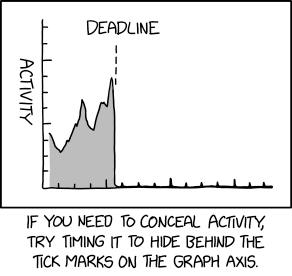
Match ID: 0 Score: 1000.00 source: xkcd.com
qualifiers: 1000.00 xkcd
Survey Marker
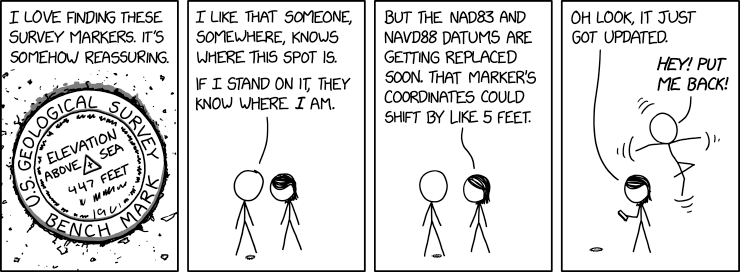
Match ID: 1 Score: 1000.00 source: xkcd.com
qualifiers: 1000.00 xkcd
Sitting in a Tree
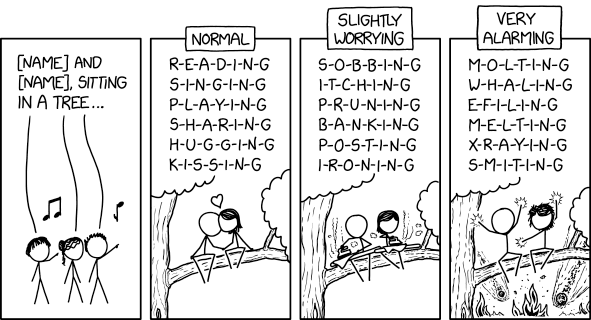
Match ID: 2 Score: 1000.00 source: xkcd.com
qualifiers: 1000.00 xkcd
Eclipse Path Maps
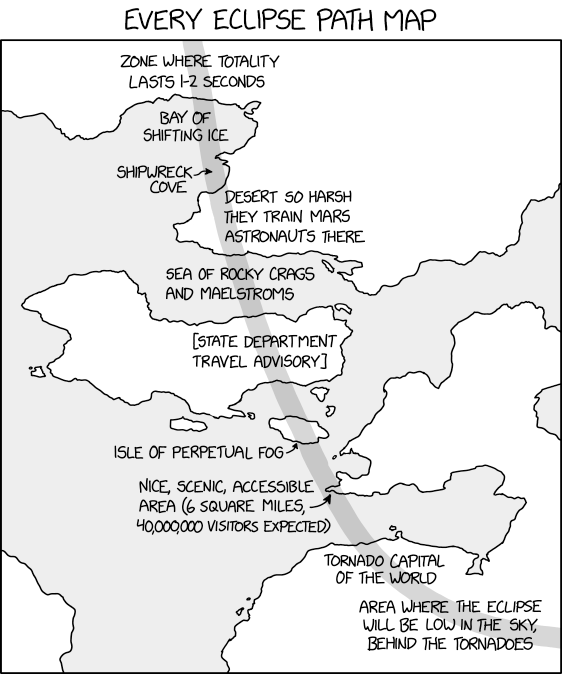
Match ID: 3 Score: 1000.00 source: xkcd.com
qualifiers: 1000.00 xkcd
Filter efficiency 99.513 (4 matches/822 results)
********** FOOD **********
return to top
She was fired after not endorsing Splenda-filled salads to people with diabetes. Why? | Neil Barsky
Thu, 18 Apr 2024 10:05:25 GMT
Elizabeth Hanna says she was fired by the American Diabetes Association after refusing to approve recipes heaped with the additive made by a major donor
Elizabeth Hanna had a simple job: help people with diabetes figure out what to eat. Anyone with common sense knows this should probably not entail foods that might increase people’s risk of getting diabetes. But that’s not necessarily the thinking at the American Diabetes Association (ADA), the world’s leading diabetes research and patient advocacy group, which also receives millions of dollars from sponsors in the pharmaceutical, food and agricultural industries.
According to a lawsuit Hanna recently filed against the ADA, the organization – which endorses recipes and food plans on its website and on the websites of “partner” food brands – tried to get her to greenlight recipes that she believed flew in the face of the ADA’s mission. These included recipes like a “cucumber and onion salad” made with a third of a cup of Splenda granulated artificial sweetener, “autumnal sheet-pan veggies” with a quarter cup of Splenda monk fruit sweetener and a “cranberry almond spinach salad” with a quarter cup of Splenda monkfruit sweetener.
Neil Barsky, a former Wall Street Journal reporter and investment manager, is the founder of The Marshall Project
Continue reading...
Match ID: 0 Score: 50.00 source: www.theguardian.com age: 0 days
qualifiers: 30.00 food, 20.00 recipes
15 Passover recipes for a meaningful and delicious holiday
Wed, 17 Apr 2024 16:00:38 +0000
Here are a variety of Passover recipes for serving at your Seder or during the rest of the week-long holiday.
Match ID: 1 Score: 50.00 source: www.washingtonpost.com age: 1 day
qualifiers: 30.00 food, 20.00 recipes
UK supermarkets accused of misleading labelling on origins of food products
Thu, 18 Apr 2024 23:01:50 GMT
Which? says inconsistencies also found, with ‘meaningless’ labels making it hard for shoppers to make informed choice
“Misleading” and “inconsistent” labels make it hard for shoppers to know where their food comes from, the consumer champion Which? has said, as it found supermarket chains were selling products with “meaningless” statements on their packaging.
Retailers must supply the “country of origin” for specific foods including fresh fruit and vegetables, unprocessed meats, fish, wine and olive oil but the rules do not generally apply to processed meat or frozen or processed fruit and vegetables.
Continue reading...
Match ID: 2 Score: 30.00 source: www.theguardian.com age: 0 days
qualifiers: 30.00 food
UK to delay start of health and safety checks on EU imports – report
Thu, 18 Apr 2024 21:30:24 GMT
New post-Brexit border checks ‘set to zero’ to avoid what Defra calls risk of serious disruption
The UK government has reportedly told port health authorities it will not “turn on” health and safety checks for EU imports as new post-Brexit border controls begin this month.
A presentation prepared by the Department for Environment, Food and Rural Affairs (Defra) highlighted the risk of “significant disruption” if the new measures were implemented, according to the Financial Times. It made clear that the systems would not be fully ready on time.
Continue reading...
Match ID: 3 Score: 30.00 source: www.theguardian.com age: 0 days
qualifiers: 30.00 food
U.S. Troops in Niger Say They’re “Stranded” and Can’t Get Mail, Medicine
Thu, 18 Apr 2024 21:22:11 +0000
U.S. military service members interviewed for a congressional inquiry said intelligence reports about how bad the situation is were being suppressed.
The post U.S. Troops in Niger Say They’re “Stranded” and Can’t Get Mail, Medicine appeared first on The Intercept.
Match ID: 4 Score: 30.00 source: theintercept.com age: 0 days
qualifiers: 30.00 food
‘I had to do an 80-mile trip’: people in UK describe stress of drug shortages
Thu, 18 Apr 2024 17:16:06 GMT
Vital cystic fibrosis drug and HRT among medications people have struggled to find, as shortages become ‘new normal’ in UK
Patients have described the effect on their health and wellbeing of the “new normal” of drug shortages in the UK, which has led to three-month delays and 80-mile round trips to acquire medication.
Simon Bell, a 43-year-old data analyst from Tyne and Wear, has cystic fibrosis and requires medication that allows him to digest food. “For people with cystic fibrosis, the part of our pancreas which releases enzymes and allows us to digest food doesn’t work, so we have to take these tablets, which does the job of what’s missing from our pancreas,” he says.
Continue reading...
Match ID: 5 Score: 30.00 source: www.theguardian.com age: 0 days
qualifiers: 30.00 food
Trader Joe’s recalls fresh basil after salmonella outbreak
Thu, 18 Apr 2024 17:01:00 +0000
Trader Joe’s is warning customers who purchased fresh basil from stores around the country after investigators linked the product to a salmonella outbreak.
Match ID: 6 Score: 30.00 source: www.washingtonpost.com age: 0 days
qualifiers: 30.00 food
13 Best Coffee Grinders (2024): Conical, Flat Burr, Blade, and Hand Grinders
Thu, 18 Apr 2024 15:00:00 +0000
Get more joy from your java. These conical-burr, flat-burr, and bladed machines let you enjoy freshly ground beans in every cup.
Match ID: 7 Score: 30.00 source: www.wired.com age: 0 days
qualifiers: 30.00 food
Sweet potato and a tangy glaze make turkey meatloaf special
Thu, 18 Apr 2024 14:19:56 +0000
Adding grated sweet potato gives sometimes-dry turkey a welcome dose of moisture, flavor and nutrition.
Match ID: 8 Score: 30.00 source: www.washingtonpost.com age: 0 days
qualifiers: 30.00 food
GE Café Specialty Drip Coffee Maker Review: Only So-So
Thu, 18 Apr 2024 12:30:00 +0000
GE’s drip coffee maker is expensive, not dishwasher-safe, and makes a so-so cup of joe.
Match ID: 9 Score: 30.00 source: www.wired.com age: 0 days
qualifiers: 30.00 food
Aid trucks enter Gaza through Erez crossing, World Food Program says
Thu, 18 Apr 2024 11:10:10 +0000
Match ID: 10 Score: 30.00 source: www.washingtonpost.com age: 0 days
qualifiers: 30.00 food
Food crazes make me want to roll my eyes. But first, pass me a crookie | Jay Rayner
Thu, 18 Apr 2024 11:00:27 GMT
History is littered with food fads, from pineapples to ‘poultry mania’ – and now, anything involving croissant dough
Parisians can be unforgivingly critical of each other where food fads are concerned. “It is a fashion, a madness,” said one Françoise d’Aubigné, when her social circle became dribblingly obsessed with the Next Big Thing. “The anxiety to eat them, the pleasure of having eaten them and the desire to eat them again” were all that anybody was talking about, she said. She clearly found it extremely annoying. Perhaps Françoise was laying into the recent craze for the crookie, a hybrid of the croissant filled with cookie dough and re-baked, which launched in October 2022 at Boulangerie Louvard on Rue de Châteaudun. It recently became a viral sensation after being amplified on TikTok. Suddenly Parisians were queueing down the street for them. From selling about 150 a day, the bakery now shifts 1,500.
Except our critic wasn’t talking about crookies. Françoise d’Aubigné, also known as Madame de Maintenon, was the mistress of Louis XIV and she was exasperated by a craze in the very last years of the 17th century for fresh garden peas, a then-novel alternative to dried. “There are ladies who, after having dined, and dined well, eat garden peas in their quarters before going to bed,” she raged. Annoying bloody hipsters with their stupid fresh peas.
Continue reading...
Match ID: 11 Score: 30.00 source: www.theguardian.com age: 0 days
qualifiers: 30.00 food
How to store half a lemon – and 17 other ways to keep leftover food fresh
Thu, 18 Apr 2024 09:00:24 GMT
What should you do with opened tins, cut avocados and egg yolks that weren’t required in your recipe? Chefs and food experts tell all
Attention home cooks: do you, like me, have half a lemon, perhaps encased in a beeswax wrap or clingfilm, sitting in your fridge? Half a cucumber, going dry at one end? Or maybe an open jar of capers, barely used, but well past the two-week recommended refrigeration period? So often, a recipe requires just half an onion, or a third of a block of tofu – especially when cooking for one.
According to the 2024 UN Food Waste Index report, about a fifth of the world’s food is wasted. Worldwide, households are responsible for the majority of it: about 60% of the 1bn tonnes of food thrown away annually. So how best to keep your leftover food fresh – and for how long does it remain safe to eat?
Continue reading...
Match ID: 12 Score: 30.00 source: www.theguardian.com age: 0 days
qualifiers: 30.00 food
‘People are begging us to feed their children’: Gaza refugees in Cairo find little help
Thu, 18 Apr 2024 08:16:23 GMT
With no centralised relief effort in Egypt, Palestinians are relying on grassroots charities for food, rent and clothing
The last thing Rania sold was her jewellery. In the weeks after her family first woke up to heavy shelling in northern Gaza, they lost everything as they journeyed south to escape the bombs. “Wherever we went, the houses would be destroyed,” she says. “We were sent running from place to place.”
After three long months, she found herself in the border city of Rafah parting with her rings, gold bracelets and necklaces to pay the $15,000 “coordination fees” needed to get her family on the evacuation list to leave Gaza.
Continue reading...
Match ID: 13 Score: 30.00 source: www.theguardian.com age: 0 days
qualifiers: 30.00 food
Cooking chat: Is it better to crack eggs on a bowl rim or the counter?
Wed, 17 Apr 2024 16:00:01 +0000
Every Wednesday at noon Eastern, Aaron Hutcherson and Becky Krystal answer your cooking questions.
Match ID: 14 Score: 30.00 source: www.washingtonpost.com age: 1 day
qualifiers: 30.00 food
Dining chat: Why are restaurants rushing diners through meals? We aren’t lingerers.
Wed, 17 Apr 2024 15:00:08 +0000
Washington Post food critic Tom Sietsema entertains your dining questions, rants and raves.
Match ID: 15 Score: 30.00 source: www.washingtonpost.com age: 1 day
qualifiers: 30.00 food
These banana pecan muffins are a naturally sweet start to your day
Wed, 17 Apr 2024 14:00:59 +0000
Sweetened with ripe bananas and date sugar, these muffins are gently sweet without any added sugar.
Match ID: 16 Score: 30.00 source: www.washingtonpost.com age: 1 day
qualifiers: 30.00 food
Ahead of Congressional Testimony, Columbia President Cracks Down on Student Advocacy for Palestine
Mon, 15 Apr 2024 19:14:07 +0000
Columbia, Vanderbilt, and Pomona College all seriously disciplined students protesting against Israel’s war in Gaza this month.
The post Ahead of Congressional Testimony, Columbia President Cracks Down on Student Advocacy for Palestine appeared first on The Intercept.
Match ID: 17 Score: 25.71 source: theintercept.com age: 3 days
qualifiers: 25.71 food
The Food Issue, a Special Digital Edition
Mon, 15 Apr 2024 10:00:00 +0000
New articles, cartoons, photography, and more will publish each day between April 22nd and 28th.
Match ID: 18 Score: 25.71 source: www.newyorker.com age: 3 days
qualifiers: 25.71 food
Turkey and Sweet Potato Meatloaf
Thu, 18 Apr 2024 04:00:00 +0000
This meatloaf relies on a generous amount of grated sweet potato to add moisture, texture and color to ground turkey.
Match ID: 19 Score: 20.00 source: www.washingtonpost.com age: 0 days
qualifiers: 20.00 recipes
Banana Pecan Muffins
Wed, 17 Apr 2024 04:00:00 +0000
These tender, fragrant banana muffins offer a cakelike experience that is nourishing, too.
Match ID: 20 Score: 20.00 source: www.washingtonpost.com age: 1 day
qualifiers: 20.00 recipes
A tour of the International Space Station with Andreas Mogensen
Fri, 12 Apr 2024 12:00:00 +0200
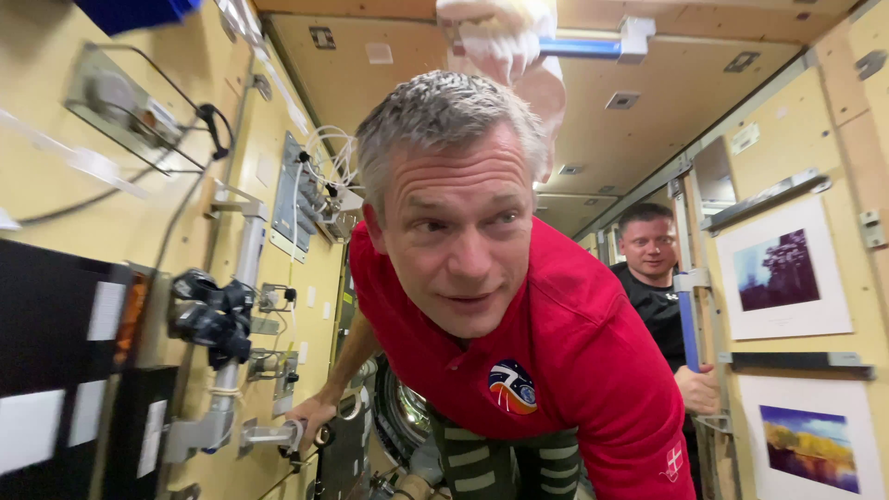 Video:
00:07:30
Video:
00:07:30
On the last day of his Huginn mission, ESA astronaut Andreas Mogensen takes us on a tour of the place he called home for 6 months: the International Space Station. From the beautiful views of Cupola to the kitchen in Node 1 filled with food and friends and all the way to the science of Columbus, the Space Station is the work and living place for astronauts as they help push science forward.
Match ID: 21 Score: 12.86 source: www.esa.int age: 6 days
qualifiers: 12.86 food
Sign up for the Feast newsletter: our free Guardian food email
Tue, 09 Jul 2019 08:19:21 GMT
A weekly email from Yotam Ottolenghi, Meera Sodha, Felicity Cloake and Rachel Roddy, featuring the latest recipes and seasonal eating ideas
Each week we’ll send you an exclusive newsletter from our star food writers. We’ll also send you the latest recipes from Yotam Ottolenghi, Nigel Slater, Meera Sodha and all our star cooks, stand-out food features and seasonal eating inspiration, plus restaurant reviews from Grace Dent and Jay Rayner.
Sign up below to start receiving the best of our culinary journalism in one mouth-watering weekly email.
Continue reading...
Match ID: 22 Score: 7.14 source: www.theguardian.com age: 1745 days
qualifiers: 4.29 food, 2.86 recipes
Sign up for the Fashion Statement newsletter: our free fashion email
Tue, 20 Sep 2022 11:06:20 GMT
Style, with substance: what’s really trending this week, a roundup of the best fashion journalism and your wardrobe dilemmas solved, direct to your inbox every Thursday
Style, with substance: what’s really trending this week, a roundup of the best fashion journalism and your wardrobe dilemmas solved, delivered straight to your inbox every Thursday
Explore all our newsletters: whether you love film, football, fashion or food, we’ve got something for you
Continue reading...
Match ID: 23 Score: 4.29 source: www.theguardian.com age: 576 days
qualifiers: 4.29 food
What is Blockchain: Everything You Need to Know (2022)
Mon, 18 Apr 2022 05:49:00 +0000
If you want to pay online, you need to register an account and provide credit card information. If you don't have a credit card, you can pay with bank transfer. With the rise of cryptocurrencies, these methods may become old.Imagine a world in which you can do transactions and many other things without having to give your personal information. A world in which you don’t need to rely on banks or governments anymore. Sounds amazing, right? That’s exactly what blockchain technology allows us to do.
It’s like your computer’s hard drive. blockchain is a technology that lets you store data in digital blocks, which are connected together like links in a chain.
Blockchain technology was originally invented in 1991 by two mathematicians, Stuart Haber and W. Scot Stornetta. They first proposed the system to ensure that timestamps could not be tampered with.
A few years later, in 1998, software developer Nick Szabo proposed using a similar kind of technology to secure a digital payments system he called “Bit Gold.” However, this innovation was not adopted until Satoshi Nakamoto claimed to have invented the first Blockchain and Bitcoin.
So, What is Blockchain?
A blockchain is a distributed database shared between the nodes of a computer network. It saves information in digital format. Many people first heard of blockchain technology when they started to look up information about bitcoin.
Blockchain is used in cryptocurrency systems to ensure secure, decentralized records of transactions.
Blockchain allowed people to guarantee the fidelity and security of a record of data without the need for a third party to ensure accuracy.
To understand how a blockchain works, Consider these basic steps:
- Blockchain collects information in “blocks”.
- A block has a storage capacity, and once it's used up, it can be closed and linked to a previously served block.
- Blocks form chains, which are called “Blockchains.”
- More information will be added to the block with the most content until its capacity is full. The process repeats itself.
- Each block in the chain has an exact timestamp and can't be changed.
Let’s get to know more about the blockchain.
How does blockchain work?
Blockchain records digital information and distributes it across the network without changing it. The information is distributed among many users and stored in an immutable, permanent ledger that can't be changed or destroyed. That's why blockchain is also called "Distributed Ledger Technology" or DLT.
Here’s how it works:
- Someone or a computer will transacts
- The transaction is transmitted throughout the network.
- A network of computers can confirm the transaction.
- When it is confirmed a transaction is added to a block
- The blocks are linked together to create a history.
And that’s the beauty of it! The process may seem complicated, but it’s done in minutes with modern technology. And because technology is advancing rapidly, I expect things to move even more quickly than ever.
- A new transaction is added to the system. It is then relayed to a network of computers located around the world. The computers then solve equations to ensure the authenticity of the transaction.
- Once a transaction is confirmed, it is placed in a block after the confirmation. All of the blocks are chained together to create a permanent history of every transaction.
How are Blockchains used?
Even though blockchain is integral to cryptocurrency, it has other applications. For example, blockchain can be used for storing reliable data about transactions. Many people confuse blockchain with cryptocurrencies like bitcoin and ethereum.
Blockchain already being adopted by some big-name companies, such as Walmart, AIG, Siemens, Pfizer, and Unilever. For example, IBM's Food Trust uses blockchain to track food's journey before reaching its final destination.
Although some of you may consider this practice excessive, food suppliers and manufacturers adhere to the policy of tracing their products because bacteria such as E. coli and Salmonella have been found in packaged foods. In addition, there have been isolated cases where dangerous allergens such as peanuts have accidentally been introduced into certain products.
Tracing and identifying the sources of an outbreak is a challenging task that can take months or years. Thanks to the Blockchain, however, companies now know exactly where their food has been—so they can trace its location and prevent future outbreaks.
Blockchain technology allows systems to react much faster in the event of a hazard. It also has many other uses in the modern world.
What is Blockchain Decentralization?
Blockchain technology is safe, even if it’s public. People can access the technology using an internet connection.
Have you ever been in a situation where you had all your data stored at one place and that one secure place got compromised? Wouldn't it be great if there was a way to prevent your data from leaking out even when the security of your storage systems is compromised?
Blockchain technology provides a way of avoiding this situation by using multiple computers at different locations to store information about transactions. If one computer experiences problems with a transaction, it will not affect the other nodes.
Instead, other nodes will use the correct information to cross-reference your incorrect node. This is called “Decentralization,” meaning all the information is stored in multiple places.
Blockchain guarantees your data's authenticity—not just its accuracy, but also its irreversibility. It can also be used to store data that are difficult to register, like legal contracts, state identifications, or a company's product inventory.
Pros and Cons of Blockchain
Blockchain has many advantages and disadvantages.
Pros
- Accuracy is increased because there is no human involvement in the verification process.
- One of the great things about decentralization is that it makes information harder to tamper with.
- Safe, private, and easy transactions
- Provides a banking alternative and safe storage of personal information
Cons
- Data storage has limits.
- The regulations are always changing, as they differ from place to place.
- It has a risk of being used for illicit activities
Frequently Asked Questions About Blockchain
I’ll answer the most frequently asked questions about blockchain in this section.
Is Blockchain a cryptocurrency?
Blockchain is not a cryptocurrency but a technology that makes cryptocurrencies possible. It's a digital ledger that records every transaction seamlessly.
Is it possible for Blockchain to be hacked?
Yes, blockchain can be theoretically hacked, but it is a complicated task to be achieved. A network of users constantly reviews it, which makes hacking the blockchain difficult.
What is the most prominent blockchain company?
Coinbase Global is currently the biggest blockchain company in the world. The company runs a commendable infrastructure, services, and technology for the digital currency economy.
Who owns Blockchain?
Blockchain is a decentralized technology. It’s a chain of distributed ledgers connected with nodes. Each node can be any electronic device. Thus, one owns blockhain.
What is the difference between Bitcoin and Blockchain technology?
Bitcoin is a cryptocurrency, which is powered by Blockchain technology while Blockchain is a distributed ledger of cryptocurrency
What is the difference between Blockchain and a Database?
Generally a database is a collection of data which can be stored and organized using a database management system. The people who have access to the database can view or edit the information stored there. The client-server network architecture is used to implement databases. whereas a blockchain is a growing list of records, called blocks, stored in a distributed system. Each block contains a cryptographic hash of the previous block, timestamp and transaction information. Modification of data is not allowed due to the design of the blockchain. The technology allows decentralized control and eliminates risks of data modification by other parties.
Final Saying
Blockchain has a wide spectrum of applications and, over the next 5-10 years, we will likely see it being integrated into all sorts of industries. From finance to healthcare, blockchain could revolutionize the way we store and share data. Although there is some hesitation to adopt blockchain systems right now, that won't be the case in 2022-2023 (and even less so in 2026). Once people become more comfortable with the technology and understand how it can work for them, owners, CEOs and entrepreneurs alike will be quick to leverage blockchain technology for their own gain. Hope you like this article if you have any question let me know in the comments section
FOLLOW US ON TWITTER
Match ID: 24 Score: 4.29 source: techncruncher.blogspot.com age: 731 days
qualifiers: 4.29 food
Filter efficiency 96.959 (25 matches/822 results)




 Video:
00:07:30
Video:
00:07:30
